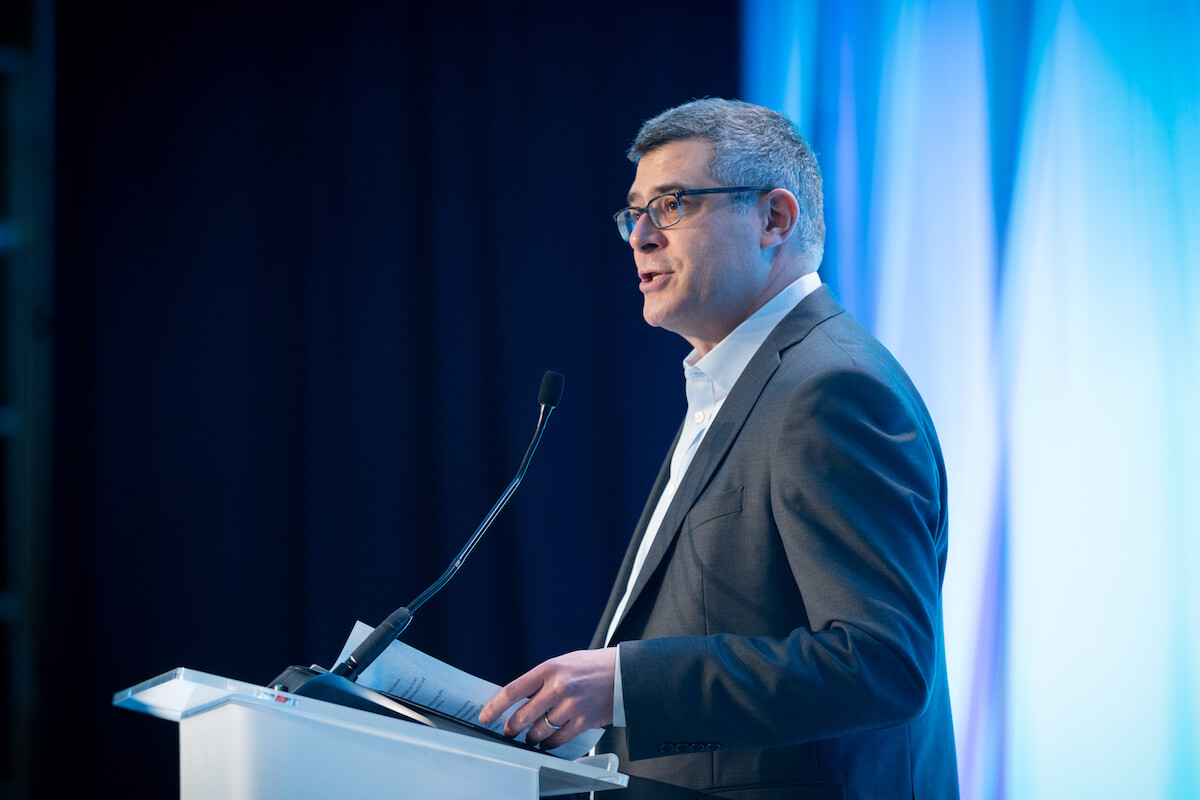Even experienced impact investors struggle with impact measurement and management, or IMM, within their portfolios.
They recognize that there is often untapped value both for them and their investees, but they lack clear “rules of the road” around how to capture it. They also face their own capacity constraints, reporting demands from their limited partners, and pressure to validate impact claims.
Over the course of researching and compiling our guidebook, “Ventures at the Helm,” we’ve heard how investors can – and do – support venture IMM efforts through financial and non-financial contributions. These vary across the four phases we outlined in our previous article, based on the needs of ventures.
We’ve also heard that when investors are clear on their IMM preferences and needs, ventures and investors both gain more value from impact management and measurement.
Impact journey alignment
Impact ventures’ growth journeys don’t always match the classic path to scale. As a result, the measurement and management questions that ventures address at each phase, and the ways in which investors can support them, also need to vary.
At each phase, investors can contribute helpfully. In the orienting phase, they can build in flexibility in how measurement frameworks are designed, to allow for updating of metrics and theories of change as needed. This could be underpinned by an open line of communication that promotes mutual learning in response to results.
In the sailing phase, investors can support ventures in very different ways. One way is by supporting the development and strength of tech infrastructure with financial or technical expertise.
For organizations that are growing rapidly, investors can work with venture teams to ensure that impact is enhanced and preserved to counter pressures that ventures may face in using financial metrics as a proxy for impact. This can be particularly helpful when commercially oriented capital imposes new demands on growth.
Investing in IMM
Many investors offer a range of non-financial support alongside capital as part of their value proposition to ventures. Impact investors can go further, not only in promoting how ventures deliver on their intended positive impacts, but also in helping mitigate negative or unintended impacts. We found four ways in which investors could support IMM as part of their investor contributions:
Chart a course together. Investors can support ventures by first identifying their own objectives, requirements and constraints related to IMM approaches and results. They should identify what they want to prove, improve or learn; how impact data is used (or could be used) to inform investment decisions; and how “hands on” to be in terms of measuring and managing impact.
By “knowing themselves” first, investors can create a foundation of clarity and trust with ventures to set the appropriate expectations, acknowledge boundaries, and jointly celebrate results and lessons.
Equip ventures with gear and guides. Investors can – and often do – directly bolster venture IMM capacity through financial support, such as allocations for technical assistance in the form of expertise, platforms and/or training.
Some impact investors, such as foundations, have gone further in procuring IMM expertise on behalf of ventures or collaboratives. These can take the form of time-bound projects (such as updating a theory of change) or extended engagements (such as co-funding a developmental evaluation).
Defer to the ship’s captain. Keeping ventures at the helm involves deliberately shifting how investors engage with ventures across the investment cycle. By acknowledging the dynamic nature of the journey together, it can encourage the investor-investee relationship to grow stronger over time, beyond annual reporting requirements.
One important aspect is to acknowledge that IMM has different costs and benefits for both investors and ventures, and that patience may be required in order to fully understand and align these over time.
Act as a lighthouse for others. Investors can influence IMM beyond their own portfolio and shift field-level norms and behaviors in ways that are consistent with venture-centric impact management and measurement.
They can lead by example in how clearly and transparently they convey expectations on IMM goals and performance, and disclose how they are making judgments on impact potential, targets and reporting requirements. This is not only attractive to ventures but also to other investors on the capital table as well.
Ventures at the helm
The complete title of our guidebook, “Ventures at the Helm: How Ventures and Investors Navigate the IMM Journey, Together,” captures three key frames we believe are critical for management and measurement to deliver the most value. “Ventures at the Helm,“ is a reminder that ventures are the most critical actors in how impact is generated and delivered (or not) for stakeholders. To “Navigate the IMM Journey” requires a two-way exchange of information and learning, and a balancing act of measuring and managing.
“Together,” signals that working jointly is fundamental for IMM to deliver value, not only to ventures and investors, but to realize the positive benefits for people and the planet.
Investors have played important roles in promoting field-building in IMM, including in the development of standards, platforms and knowledge to enable IMM. Looking ahead, we believe that IMM will be a critical component of investor contribution, especially as impact claims are coming under increasing scrutiny.
Investors can offer a variety of financial and non-financial support to enable ventures to align their IMM with their impact journeys. And they (including staff, board members and investor committees) can proactively engage with ventures to derive the most value from IMM, together.
———-
The guide, and venture and investor worksheets, are available at https://IMMjourney.com/
Laura Budzyna is an independent consultant who works with impact-driven organizations to design measurement strategies. Previously, she led the monitoring, evaluation and learning strategy at MIT D-Lab.
Karim Harji directs the Oxford Impact Measurement Programme at the Said Business School, University of Oxford. He is also managing director at Evalysis, an impact measurement and management consultancy.











